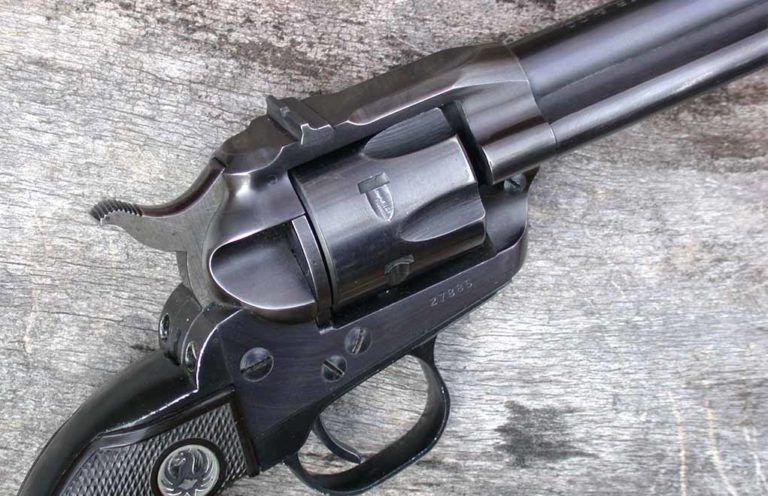
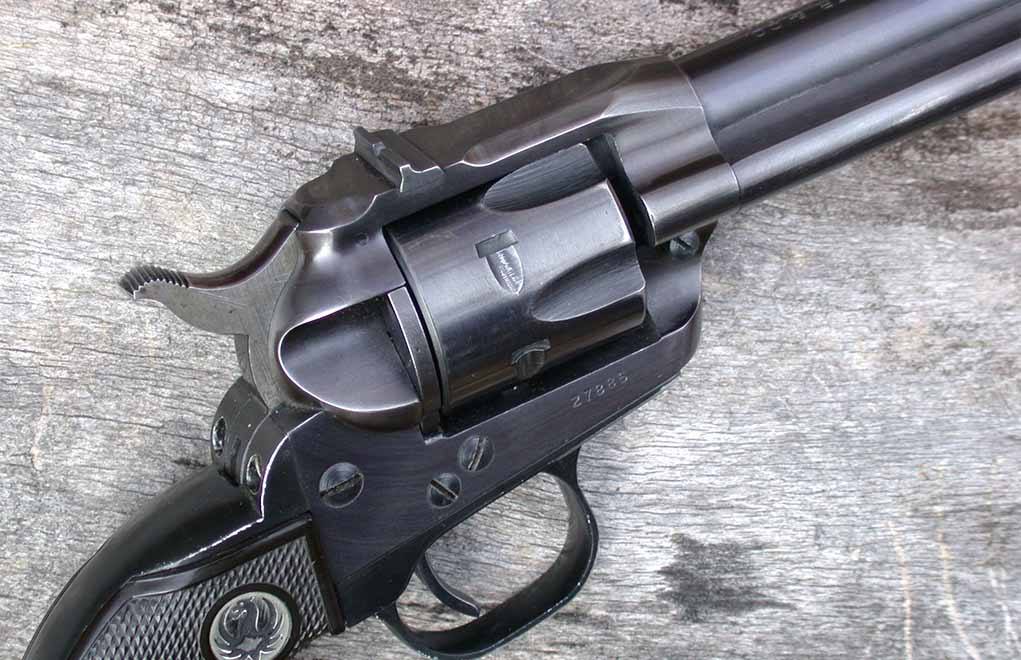
A gun inspired by the classic Western TV shows of the 1950s that were dominating the family room of nearly every home in America, the Ruger Single Six has gone on to become the stuff of legend.
How Did The Ruger Single Six Become An American Icon:
- The Ruger Single Six was inspired by the popularity of TV and movie Westerns in the 1950s.
- Given Colt discontinuing the SAA, the revolver gained a foothold.
- Originally the .22 LR had a 5 1/2-inch barrel, and 4 5/8, 6½ and 9½-inch models were later added.
- The main difference between the ‘Old' and ‘New' model Ruger Single Six was only safe to carry the old with the hammer down on an empty chamber.
- The advent of the transfer bar safety made carrying a fully loaded Ruger Single Six a reality.
The year was 1951. Bill Ruger’s company was profitable and becoming well established in the industry, and he was anxious to expand his product line. The new medium of television was growing rapidly. Black and white TV screens were lighting up America’s living rooms every night, and some of the most popular programs were Westerns. A common thread in these shows was the type of handguns used by both good guys and bad guys. By far the most frequently seen models were single-action revolvers, most of them patterned after the Colt Single Action Army.
Find Out More About Ruger Firearms
Bill Ruger, who had always been a fan of the classic Colt, saw an opportunity. Colt had ceased production of the Single Action Army at the beginning of World War II and there was no indication that it would be back anytime soon. In fact, an official announcement from Colt several years earlier had stated there would not be a post-war Colt SAA. Based on the popularity of Westerns on the TV screen and in motion pictures, Ruger decided to develop an updated and improved version of the single-action revolver.
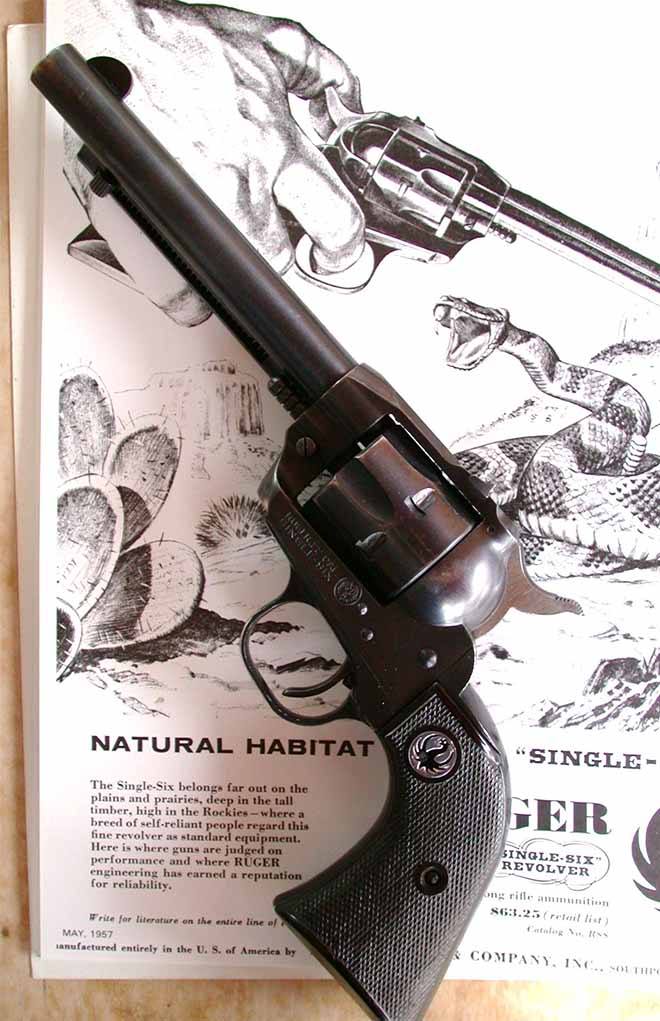
The timing was a wise move. It would be 25 years before Colt returned to the single-action market, and by that time Ruger would be well positioned as the leader in the field. The popularity of TV Westerns continued through the ‘50s and peaked in 1959, when an amazing eight out of the 10 most popular programs were Westerns.
A Grand Entrance
Work had been underway on the first Ruger single-action since 1950, and by June of 1953, the gun was ready, the Single Six. Like the Ruger Standard Automatic pistol, the Single Six was chambered for the great .22 Long Rifle — everyman’s cartridge. Based on the appearance of the Colt Single Action Army revolver, it was first introduced with a 5½-inch barrel. It could also be used with .22 Short or .22 Long ammunition. As the name suggested, the cylinder held six rounds, but the original model should only be carried with the hammer over an empty chamber. (See Old vs. New Models below.)
Later models were added with a 4 5/8-inch, 6½-inch or 9½-inch barrels. Grips were checkered hard rubber with a black eagle medallion inlay on each side. Varnished walnut or stag grips were available as an option with ivory grips added in 1954. The ivory-grip version of Ruger Single Six is one of the rarest and most collectible. The standard model had a blued barrel and cylinder with an anodized aluminum grip frame. The earliest models featured a flat loading gate and rounded profile front sight. Made between 1953 and 1957, these became known as Flat Gate models. In 1958, this loading gate was changed to a contoured shape.
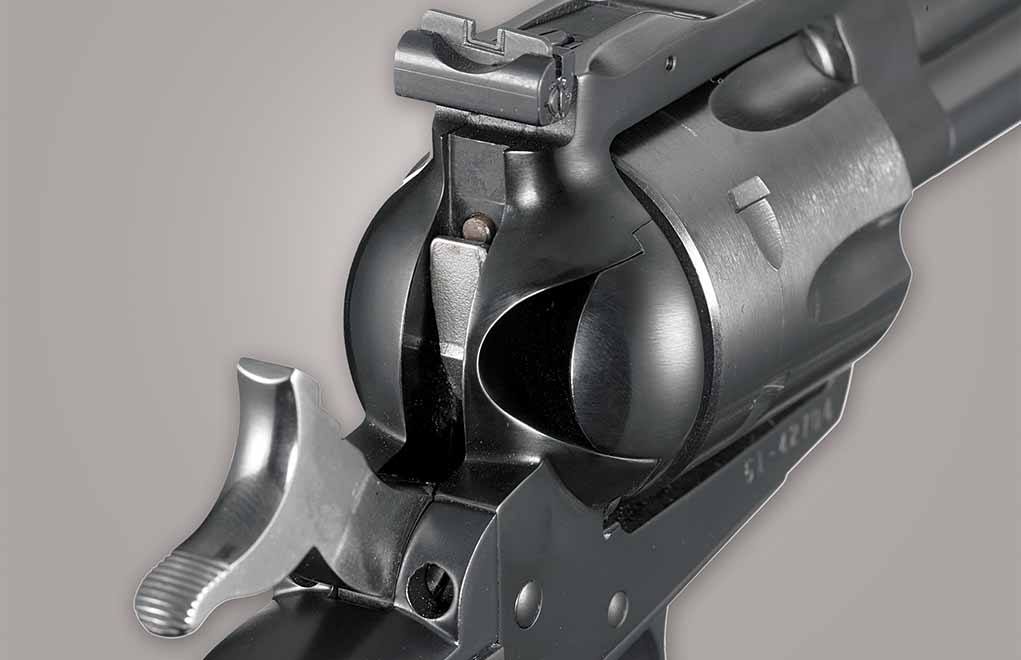
A series of Ruger Single Six models — about 250 — were engraved by the factory between 1954 and 1958, and they are considered the most collectible of all Ruger firearms. Most were engraved by Charles Jerred of the United States, while a total of 22 were sent to Spain to be engraved by several notable artisans there.
More Gun Collecting Info:
- The Walther PP Series
- The Quintessential 22 Pistol: The Colt Woodsman
- The Rocky History Of The L.C. Smith
- The Browning SA-22
- Colt Python: The Cadillac Of Revolvers
A Lightweight Single Six with aluminum cylinder was introduced in 1954. Original prices were $57.50 for the Standard model in 1953, and $63.25 for the Lightweight (1955). In 1959, a version was introduced chambered for the .22 WMR (Winchester Magnum Rimfire) cartridge, and it was made only with a 6½-inch barrel. A Single Six Convertible model with interchangeable .22 LR and .22 WMR cylinders became available in 1962 and replaced the .22 WMR only model. It was made with barrel lengths of 4 5/8, 5½, 6½ or 9½ inches.
The Super Single Six model was introduced in 1964. Features include an adjustable rear sight, a ramp front, integral sight rib, and interchangeable cylinders for .22 LR and .22 WMR. Barrel lengths were 4 5/8 inches (rare), 5½ and 6½ inches. About 100 nickel-plated guns were made from 1965 to 1968.
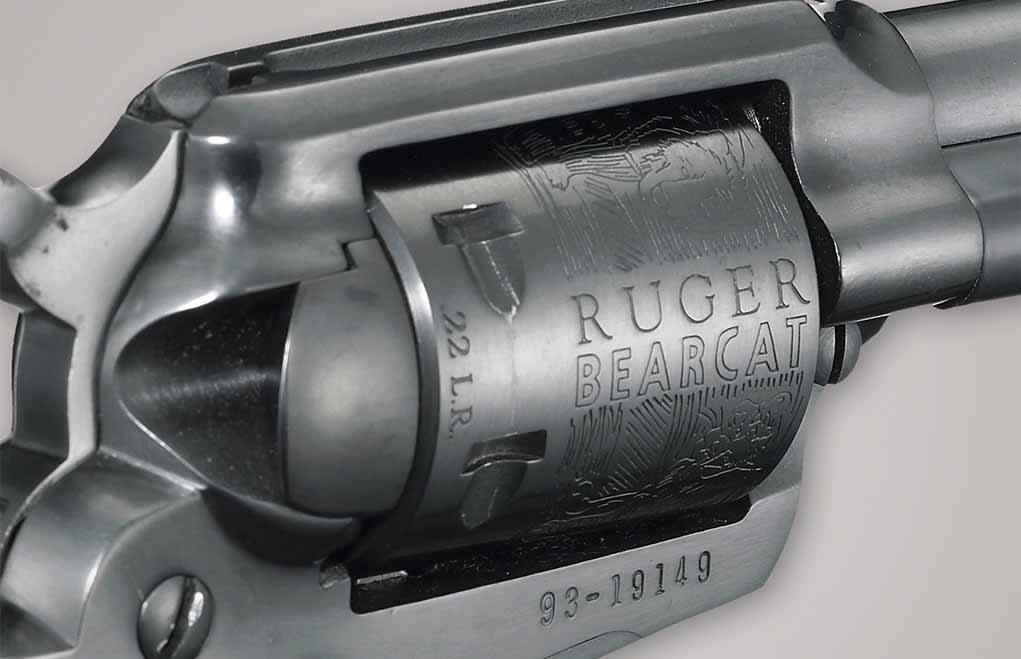
The Bearcat is a scaled-down single action in .22 LR with a non-fluted, roll-engraved cylinder. Introduced in 1958, the first Bearcats had plastic wood-impregnated grips, later changed to walnut in 1963. Many Ruger aficionados are aware that Bill Ruger was an admirer and collector of classic automobiles. Among these was the Stutz Bearcat, and when Ruger designed a new variant of the Single Six he named it the Bearcat.3 In addition to its scaled-down size, the Bearcat was a fancier, racier gun with a black anodized aluminum frame and a brass-colored, anodized alloy trigger guard. The Old Model was discontinued in 1972 and reintroduced in 1995 as the Bearcat New Model.
Old vs. New Models
Shooters, collectors and gun historians categorize all Ruger single-action revolvers, including rimfire and centerfire models, as Old Models and New Models. The most significant difference between them is that the Old Models, made before 1973, were based on the original single-action designs of the 19th century and should be carried with the hammer lined up with an empty chamber. This was to avoid an accidental discharge if a gun was dropped with the hammer positioned over a live round. Beginning in 1973, a transfer bar safety was added, which prevented the gun from firing unless the trigger was pulled, allowing the safe carry of six rounds in the cylinder. All Ruger single actions made after 1973 have this safety feature, including current models.
In addition to the improved transfer-bar firing system, other changes included the option of adjustable sights, a stainless-steel finish and a new loading procedure. Unlike the Old Models, the hammer has no half-cock position. With the hammer in the forward position, the loading gate is opened and the cylinder can full rotate. After loading or unloading, the gate is simply closed.

The New Model Single Six is still in production today. Many different models and variations have been added to the New Model Ruger line over the years, too many for us to cover in this column. As is the case with other Ruger firearms, there are numerous special editions, commemoratives and distributor exclusive models. Since most of the collector interest in the Single Six or Bearcat is for the Old Models, the values shown nearby are for those revolvers.
Editor's Note: This article originally appeared in the February 2019 issue of Gun Digest the Magazine.
Get More Ruger Info:
- Great Ruger Guns
- Ruger No. 1
- Ruger Precision Rifle
- Ruger Redhawk
- Ruger Super Redhawk
- Ruger Blackhawk
- Ruger 10/22
- Ruger LCR
- Ruger LCRx
- Ruger 77/22
- Ruger 77/44
- Ruger SR1911
- Ruger Hawkeye
- Ruger Mark IV
- Ruger SR-556
- Ruger LCP II
- Ruger American Magnum
- Ruger American Rifle
- Ruger Gunsite Scout Rifle
- Ruger SR-762
- Ruger Red Label
- Ruger SR40
- Ruger Single Nine
- Ruger P345

Next Step: Get your FREE Printable Target Pack
Enhance your shooting precision with our 62 MOA Targets, perfect for rifles and handguns. Crafted in collaboration with Storm Tactical for accuracy and versatility.
Subscribe to the Gun Digest email newsletter and get your downloadable target pack sent straight to your inbox. Stay updated with the latest firearms info in the industry.

![Best Concealed Carry Guns In 2025 [Field Tested] Wilson Combat EDC X9S 1](https://gundigest.com/wp-content/uploads/Wilson-Combat-EDC-X9S-1-324x160.jpg)


![Best 9mm Carbine: Affordable PCCs [Tested] Ruger Carbine Shooting](https://gundigest.com/wp-content/uploads/Ruger-Carbine-Shooting-100x70.jpg)
![Best AR-15: Top Options Available Today [Field Tested] Harrington and Richardson PSA XM177E2 feature](https://gundigest.com/wp-content/uploads/Harrington-and-Richardson-PSA-XM177E2-feature-100x70.jpg)

Can .22 short or LR ammunition be fired from the Single Six cylinder designated .22 Win. Magnum Cal.?